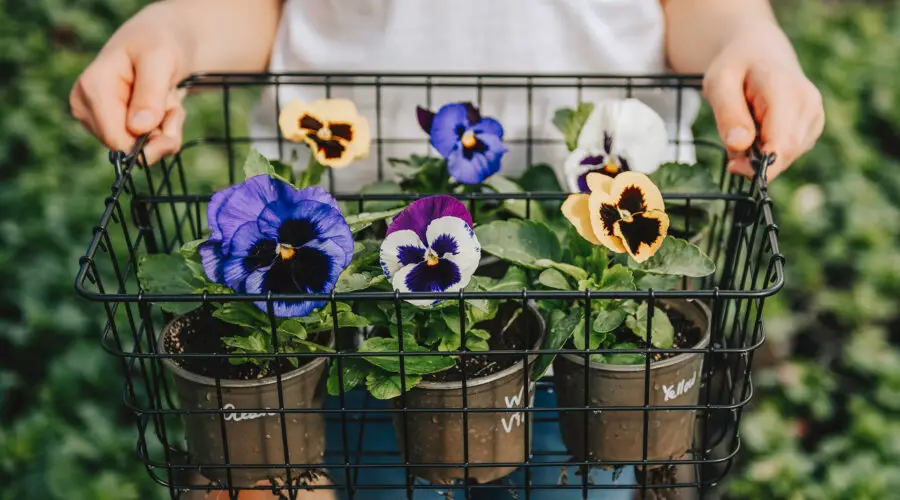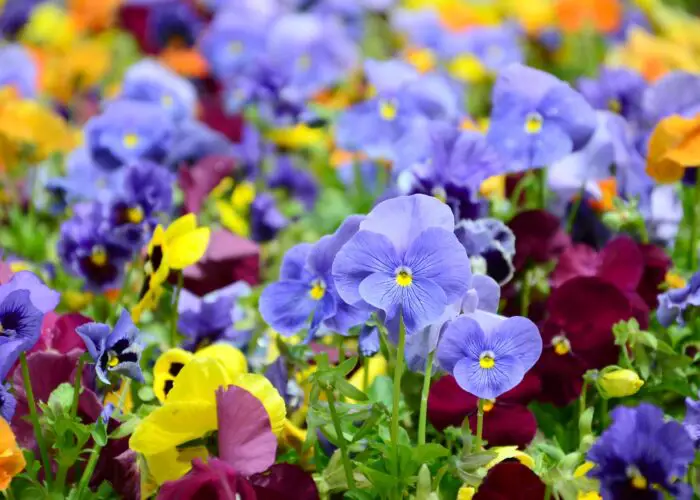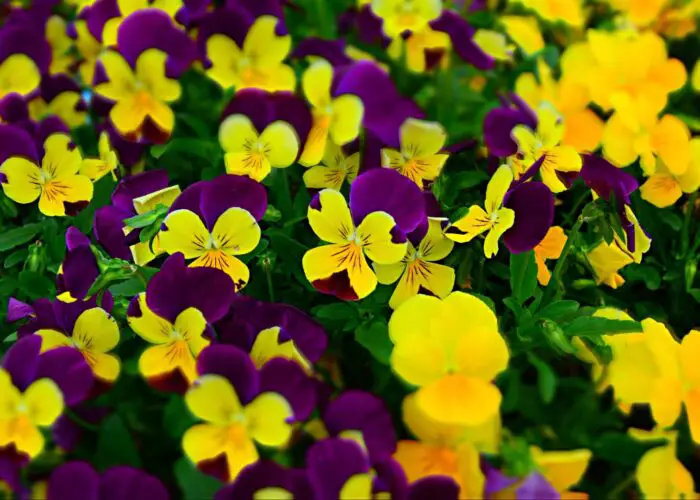7 Most Popular Varieties of Violets to Brighten Up Your Garden
There are many wonderful varieties of Violets. In fact, the Viola genus has over 500 species categorized under it, and many have interesting histories behind them. Some species are more popular due to aesthetic reasons, while others are popular because of their aroma or health benefits. Aside from their use in the garden, Violets are also good to keep close to home due to their noted medicinal properties and delicate additions to food. From syrups and baked goods to infusions for respiratory ailments, the Violet carries more significance than most might assume. Although every variety shares several similarities and properties, these seven species are the most popular because of their vibrancy, history and availability. With that in mind, let’s look at what each of these species has to offer.
1. Viola tricolor (Johnny Jump Up)
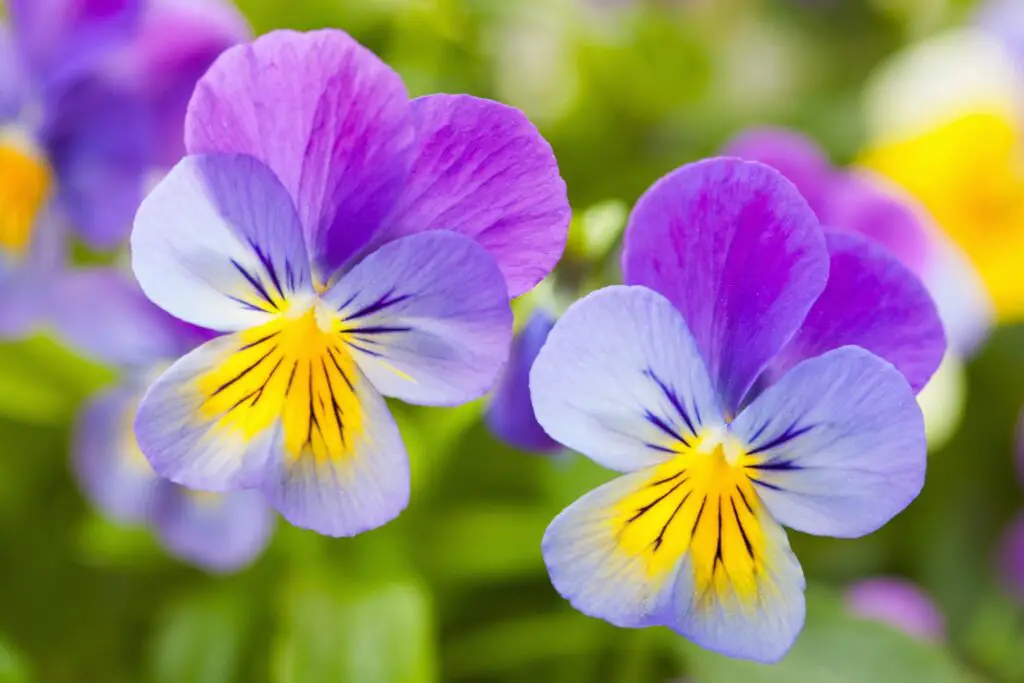
Viola tricolor (Johnny Jump Up)
The first most popular variety of Violet is Viola tricolor, also known as Johnny Jump Up, Heart’s Delight or Wild Pansy. Considered invasive and exotic, Johnny Jump Up is native to Europe and Asia, but can be found in scattered areas around eastern North America. Reports of this variety being found in the United States have been made in Alaska, Maine, and Maryland.
Viola tricolor is most commonly found in meadows, banks, fields, gardens, sand fields and wastelands, which shows how adaptable this variety is in regards to growing conditions and habitats. It can be grown as an annual, biennial, or perennial with a short bloom time.
As indicated by the name, Viola tricolor has three staple colors: white, yellow and purple. Aside from the captivating flowers, this plant also has oval-shaped lobed leaves attached to its evergreen foliage.
Violets of all varieties have some affiliation with mythology and folklore, but Viola tricolor especially has roots in Roman and Greek mythology.
Viola tricolor has another name in mythology called “Love in Idleness”, which refers to the story of Cupid. Cupid was said to have shot a Viola tricolor with one of his arrows, which caused the flower to be infused with love and desire, essentially a love potion flowing through the flower’s veins.
In Greek mythology, Viola tricolor was originally one single color, white, and was worshipped by the goddess Aphrodite. However, Eros also tried to claim the flower in the name of his worship, so Aphrodite stopped this by infusing color into the flowers’ petals.
Johnny Jump Up can reach heights of between 15 to 30 cm (6 to 12 inches) tall, and will grow best in areas of full sun to partial shade.
Once this flower reaches its mature state, the plant will then produce up to 50 seeds for the capsule. These seeds are distributed easily through the help of small creatures and wind.
Johnny Jump Up can grow in both full sun and partial shade, and requires moist, yet well-drained soil. It prefers slightly more acidic or neutral soil and can grow in the United States zones between three and eight. It needs about six hours of sunlight a day, but is sensitive to heat, so it tends to prefer cooler climates.
2. Viola × wittrockiana (Pansy)
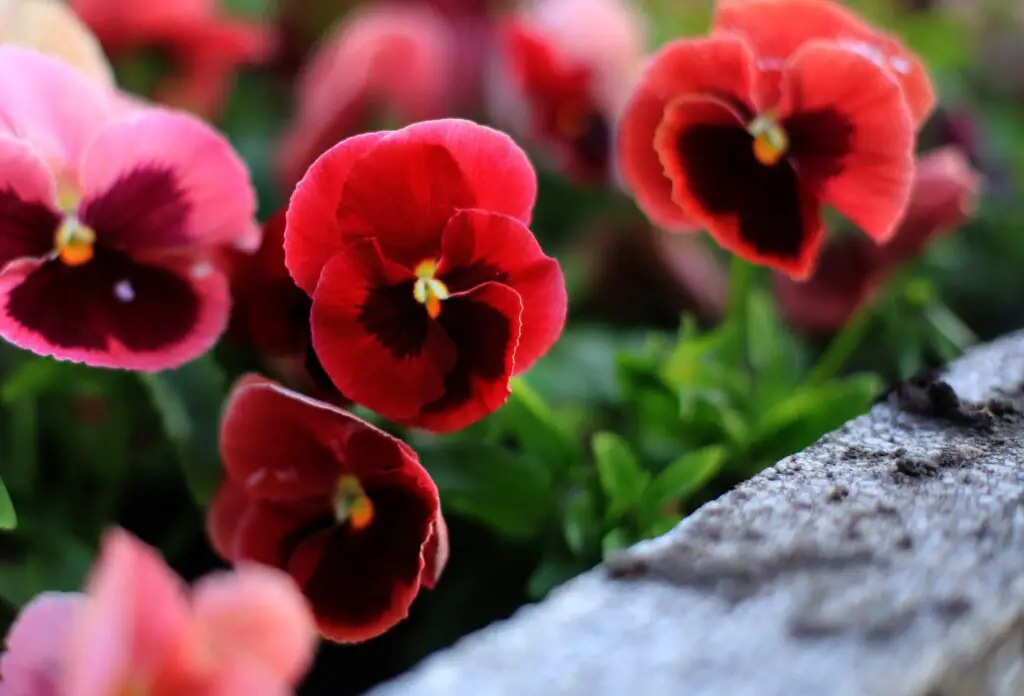
Viola × wittrockiana (Pansy)
Also known as Pansy or Lady’s Delight, Viola x wittrockiana is an herbaceous perennial and biennial variety of Violet. It is a hybrid of Viola tricolor and several other species of the genus Viola.
Unlike the other varieties included in this article, the Pansy comes in a wide array of colors, including shades of pink, red, blue, purple and yellow.
Similar to Viola tricolor, this variety grows and carries seed capsules that open once the plant reaches maturity. Its flowers are larger and more rounded spanning an average of 3 to 5 cm (1 to 2 two inches), some with what is called an eyespot in the center of each blossom. Some of them are solid colored, while others look like little faces.
The Pansy has been used in art and found in several religious depictions since the 1500s and into the 1800s, such as accompanying the women in Catholic stories.
This variety prefers cooler climates, from the zones seven and up toward Northern Canada. It prefers full sun exposure, but can grow well in partial shade. The Pansy favors loose, nutrient-rich soil that is also slightly acidic.
3. Viola odorata (Sweet Violet)
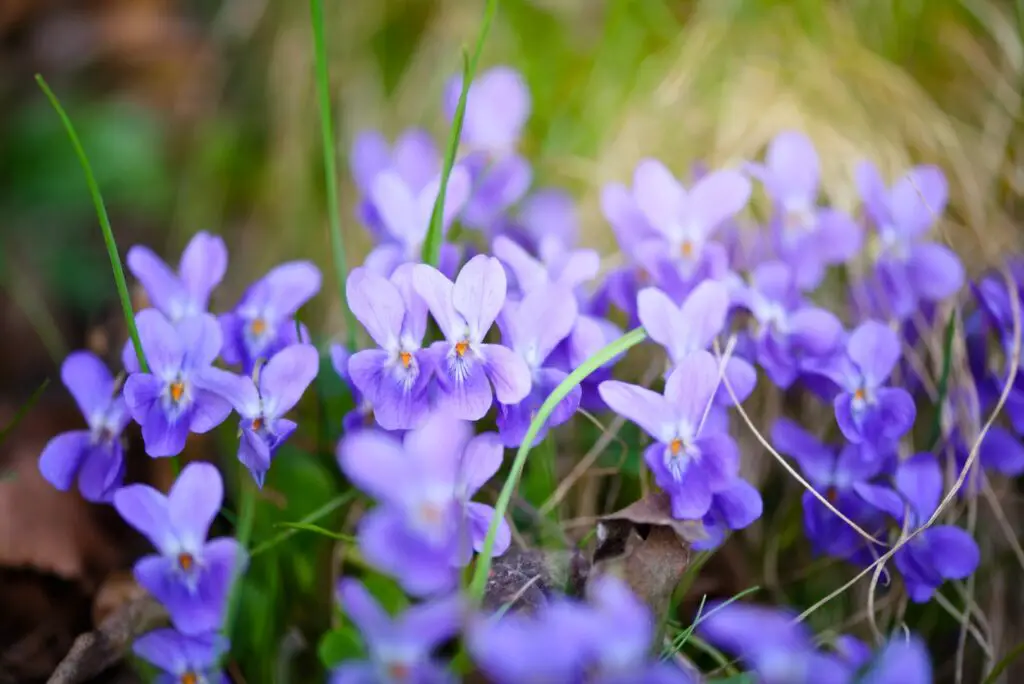
Viola odorata (Sweet Violet)
This hardy perennial variety is also known as English Violet or Wood Violet, but most commonly called Sweet Violet. It is native to Europe and Asia, and occasionally referred to as the “uninvited guest” amongst plants.
Sweet Violet often springs up in field clearings and the edges of forests, but it can be spotted in gardens and yards.
The flowers for this variety are typically white or purple. Each flower blooms on a leafless stem, and in the inner area of the flower contains tiny hair-like fibers. Sweet Violet reaches a height between 13 and 23 cm (5 and 9 inches) tall.
In Greek mythology, the Sweet Violet is the emblematic flower of Aphrodite, the goddess of love and beauty.
Historically, Sweet Violets were used during the Victorian era as a sweet syrup or perfume oil. Their flowers provide a sweet fragrance that many wanted to use in their perfumes, yet could also be used to make a sweet-tasting syrup in marshmallow and scones.
Sweet Violet prefers partial shade and moist soil. It can tolerate full sun in the cooler months, in the spring, but is otherwise best kept indoors or in the shade. It blooms in the late winter to the early spring.
4. Viola cornuta (Horned Violet)
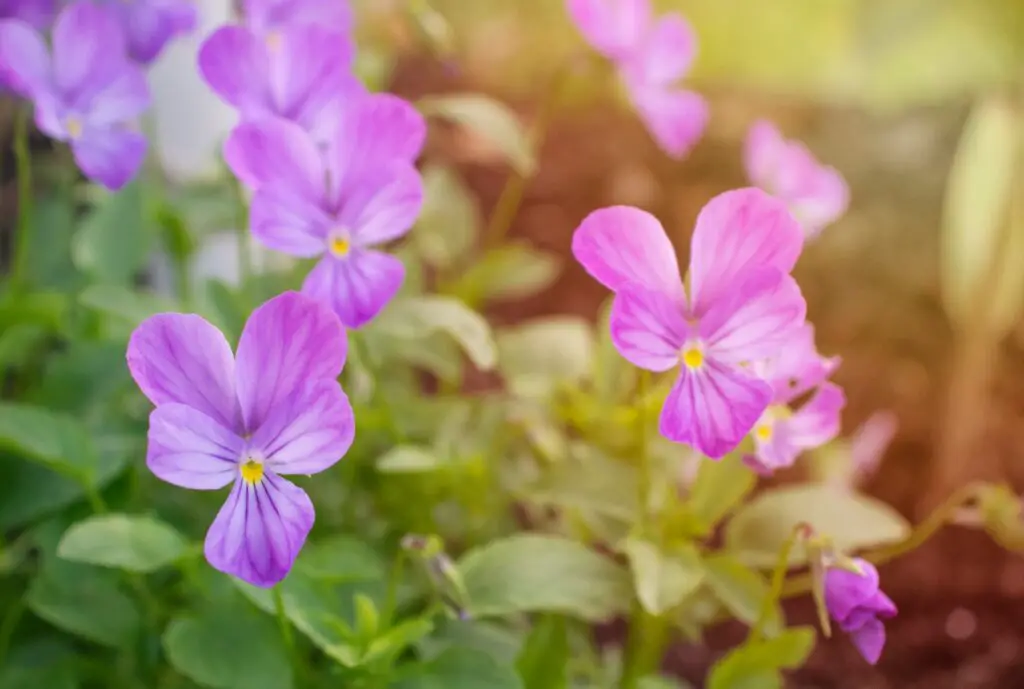
Viola cornuta (Horned Violet)
Viola cornuta is known as Horned Violet, and is also referred to as Horned Pansy or Tufted Violet.
Horned Violet is an evergreen perennial that is native to the Pyrenees and northern Spain. Because of this, the Horned Violet would be classified as an exotic plant, therefore invasive to the United States and the rest of North America.
The names “Horned Violet” and “Horned Pansy” refer to a characteristic specific to this variety, which is the nectar spur that stems upward from this plant.
Like most Violet species, Horned Violet spreads by creeping across the ground, with flowers that reach 3 to 7 cm (1 to 3 inches) in size.
In Scotland, the Horned Violet is said to be affiliated with marriage and love, but also connected with death.
In France, this variety is sometimes referred to as “Violette Folle”, meaning mad Violet, as folklore says that whoever smells this variety of Violet will go mad.
Horned Violet is another variety that prefers light or partial shade over full sun. While this variety likes moist soil, it is important to not overwater it. Do not let the soil dry out completely, but not to overwater as to avoid root rot. Water lightly, but consistently. Horned Violet grows between zones six and nine, and prefers soils that are mildly acidic to mildly alkaline.
5. Viola sororia (Common Blue Violet)
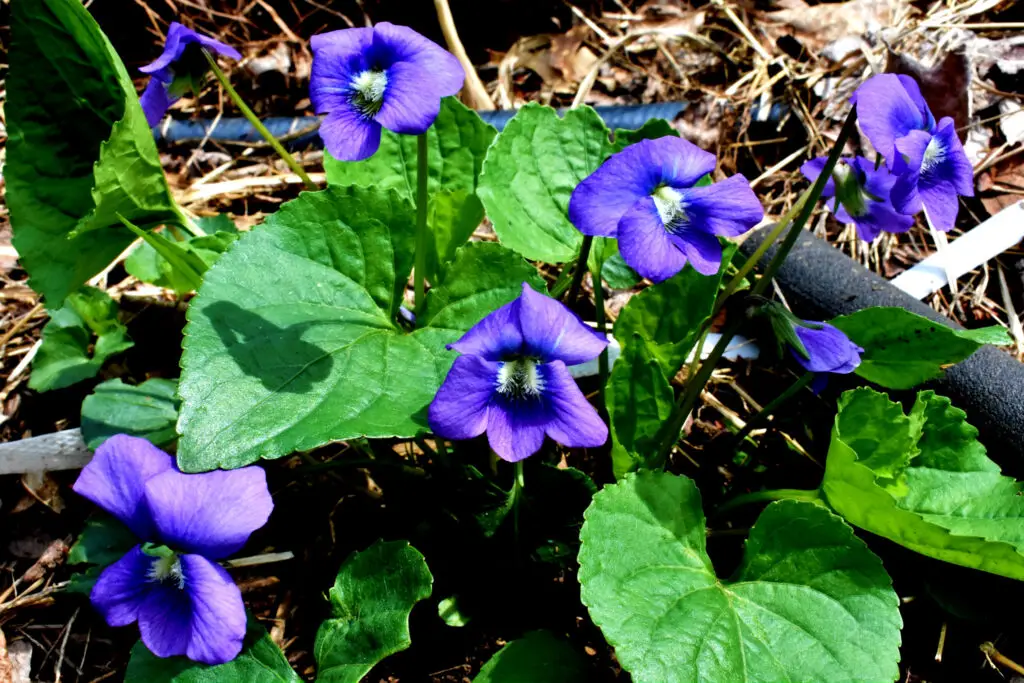
Viola sororia (Common Blue Violet)
Viola sororia is known as Common Blue Violet, yet is also referred to as Wooly Blue Violet, Confederate Violet, Hooded Violet and Dooryard Violet. This variety is a stemless perennial that mostly appears in the woods, in thickets, and alongside streams in eastern North America.
The Common Blue Violet can be found in eastern Canada and in the central and eastern United States. It is actually the state flower of a few states in the United States, including Illinois, New Jersey, and Rhode Island.
It prefers shadier area and stays closer to the ground, with leaves that reach an average of 8 to 15 cm (3 to 6 inches) both in length and in width.
Although the overall taste of this variety is noted to be quite bland, the Common Blue Violet is known to be edible. As such, this variety has been both raw and cooked. Raw flowers are tossed into salads and used as garnish, while cooked flowers have been used in the process of making jellies and candy.
The Common Blue Violet can tolerate full sun and partial shade, and is tolerant to clay-like soils that are mildly acidic to mildly alkaline. It likes well-drained soil as well, so you can include sand to allow drainage as well.
6. Viola pedata (Birdfoot Violet)
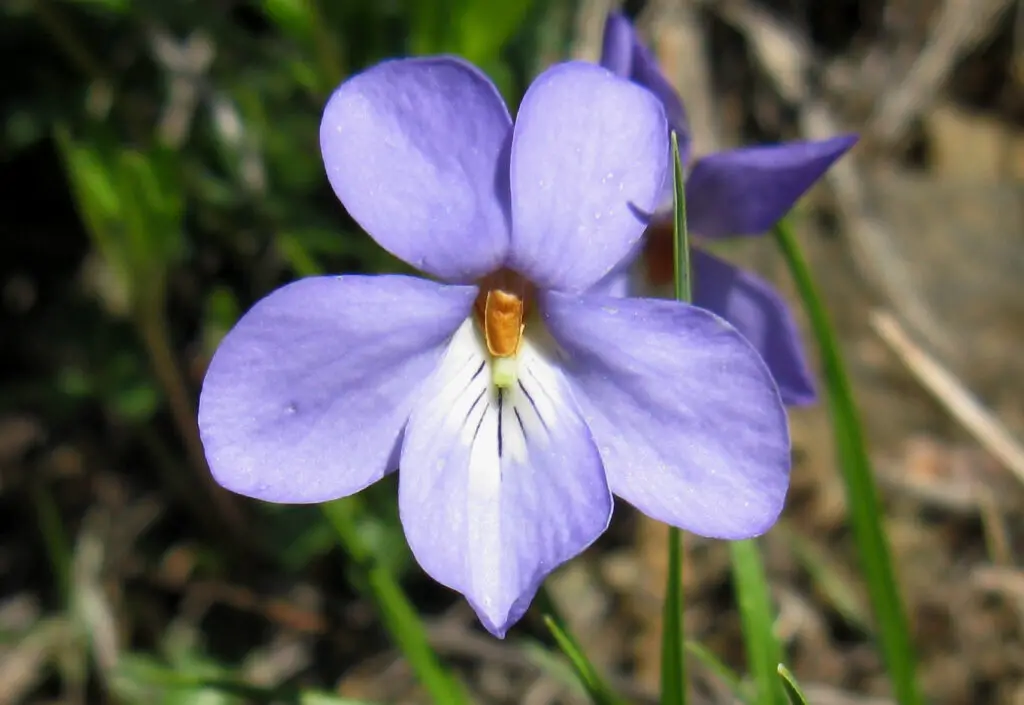
Viola pedata (Birdfoot Violet)
Viola pedata, also known as Birdfoot Violet or Crowfoot Violet, is a native perennial to North America. However, the Birdfoot Violet can only grow in a specific climate, that which happens to be in the North Carolina mountains. This mountain range is undisturbed, allowing this variety to grow densely in this area and outcompete slower growing plants.
Other habitats the Birdfoot Violet may be found include rocky open woods, pinelands and sandy prairies.
Because of these unusual growing requirements, the Birdfoot Violet is said to be one of the most beautiful, yet difficult Violets to grow.
The overall plant reaches an average of 10 to 20 cm (4 to 8 inches) in height, with flowers that reach an average of 4 cm (one and a half inches). There are no small hairs on this variety of Violet.
Unlike other varieties, the Birdfoot Violet prefers more dry soil, while still thriving in full sun to partial shade. It also prefers sandier or gravel soil, which allows more drainage. Do not be alarmed in the summer months if the foliage dies back a little because this is natural for the plant.
7. Viola riviniana (Common Dog Violet)
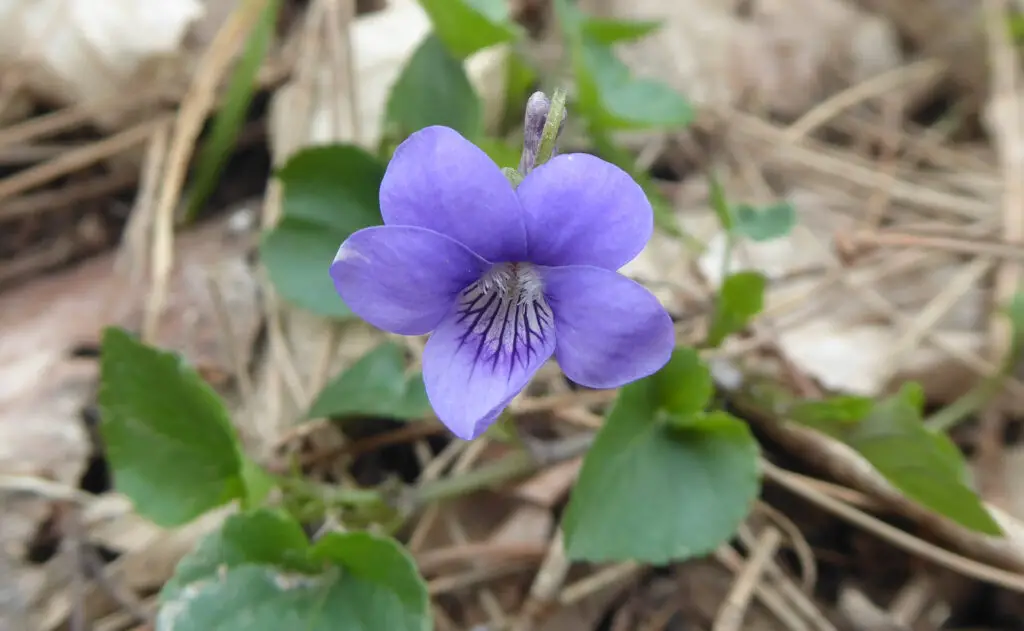
Viola riviniana (Common Dog Violet)
This variety is native to Europe, Asia and Africa, and is known as Common Dog Violet or Wood Violet.
It is a perennial commonly found in woodlands, grasslands, and hedge banks, and commonly confused for the Sweet Violet. What separates the two from their similar appearance is that the Common Dog Violet is unscented, unlike the Sweet Violet.
The Common Dog Violet reaches 13 cm (5 inches) in height, with five purple petals per each flower.
The Common Dog Violet can thrive in a wide range of sunlight exposure, from full sun to full shade. However, it is best for the plant to expose it to light at least partially. Common Dog Violets can grow between zones six and nine, blooming in late spring to mid-summer, although the foliage remains year-round.
Health Benefits and Uses of Violets
Each of the above listed varieties of Violets, in addition to the other types, share the same set of medicinal properties.
As a disclaimer, when you are seeking out wild edible plants such as flowers, it is worth the effort to double check information through multiple sources and to test new plants in small quantities. This is due to the slight debate surrounding Violets in that some believe the yellow varieties should not be eaten, while others claim that using or consuming the Violet is okay, regardless of its color.
The available, edible parts of the plant include the aboveground, also known as aerial parts, including the leaves and the flower. As a precaution, consuming the roots has been said to cause nausea, vomiting, and general stomach upset. While the roots can be eaten in very small quantities, it is best to avoid doing so in general for safety.
The usable parts can be used in a variety of ways including compresses, infused oils, vinegars, poultices, honey and salves.
With this many options available, it is easier to find the best way to use Violets medicinally or culinarily to suit your needs.
Culinary Uses
In the culinary world, Violets are safe to consume for all ages, from children to elders. They are also safe to consume for those who are currently taking pharmaceuticals, but be sure to check with your general physician just to be safe.
The exact dosage for using Violets medicinally is not given, since the aerial parts are considered to be safe in large quantities, but always listen to your body when experimenting with Violets and stop use immediately if you notice unwelcome results.
The leaves are high in vitamins A and C, with a high content rate of rutin, a glycoside that has been reported to have anti-inflammatory, antioxidant and blood-thinning properties.
In herbalism terms, Violets have cooling and moistening properties, which refers to how using the plant medicinally will work. Cooling is good for inflammation and moistening is good for symptoms of dryness, like a dry cough.
Medicinal Uses
Used internally, Violets have been used as blood cleansers, as a remedy for various respiratory conditions and as a lymphatic stimulant.
Other actions that have been affiliated with these varieties of Violets include helping to ease rheumatic conditions, soothing and relieving irritation such as mucilage, increasing urination, increasing mucus secretion, and increasing flow and the function of the lymphatic system.
Because of this list of properties, Violets have been used in combination with licorice and marshmallow roots, as a way to ease bronchitis and whooping cough. This combination has also been used as a tonic for chronically swollen lymph nodes, and inflammation in the lymphatic system.
How to Grow and Care for Violets
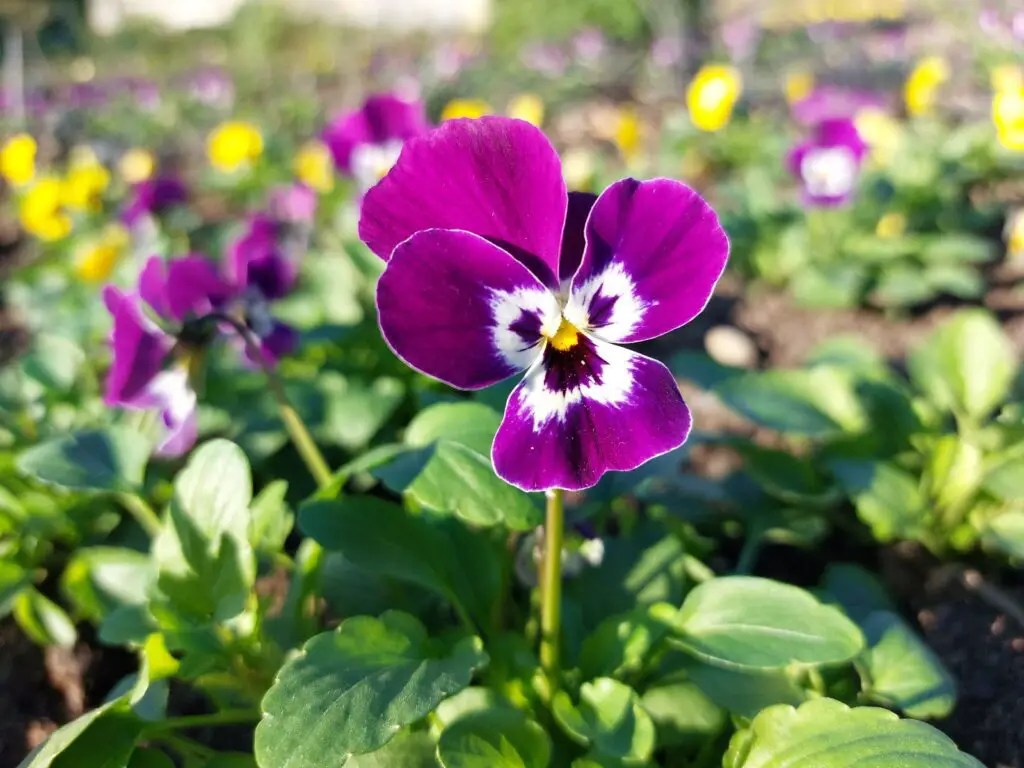
The easiest way to keep such beneficial plants nearby is to grow them yourself!
Gardening is a rewarding activity that many people should consider trying at one point or another, and if you find that one of these varieties of Violets stands out to you, pay attention to this section to learn more about how to grow them.
With each of these varieties, it is important to “deadhead” or remove wilting or dead flowers from the plant to promote fresh, new flowers to bloom.
Since most of these varieties do not bloom for more than a few months, make sure to maintain your Violets regularly to enjoy their blossoms all season!
Be sure to keep an eye out for the pests that prefer these deer-resistant flowers, including slugs, snails, aphids, mites, and plant mildews.
Other issues you might find with Violas are brown spots and drooping of leaves. In these cases, remove the brown leaves and troubleshoot the source of the drooping through water more or less and by spreading out your plants.
As a final word to those looking to grow any of these varieties, please consider growing the native species as they won’t endanger other creatures and will grow better in their native environments.
Why Should You Choose Violets
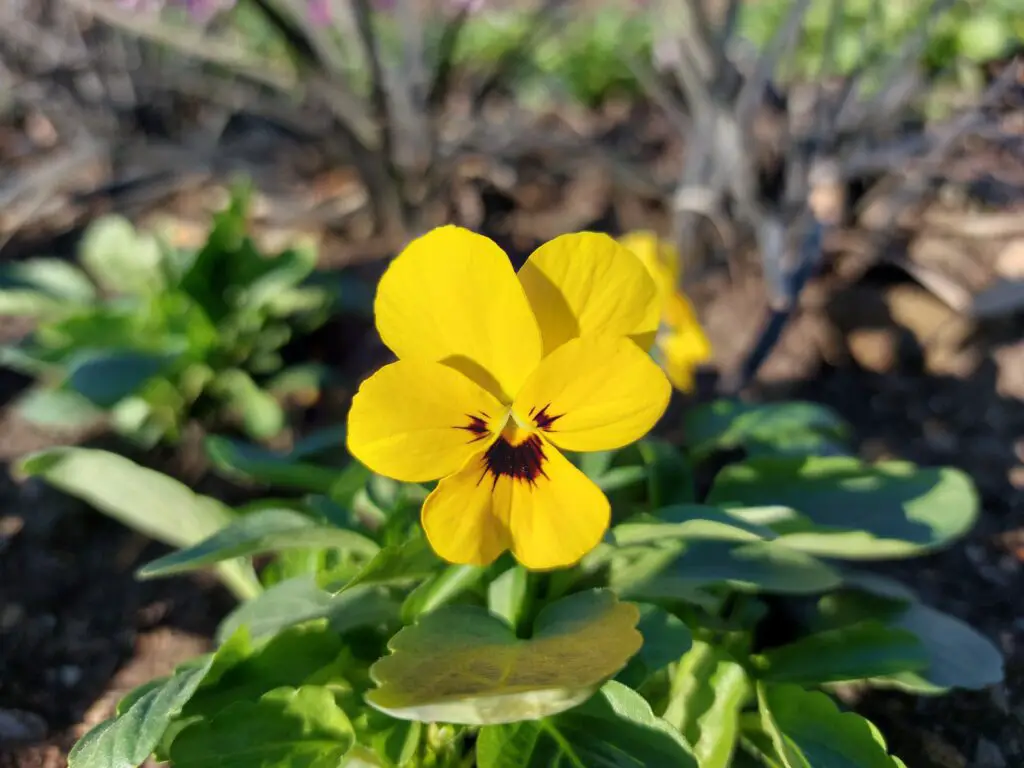
Violets are easy flowers to spot in the wild and buy at nurseries and greenhouses, which makes for easy landscaping and access to edible flowers.
Since most do not take up much space, Violets also make great fillers for lacking open spaces in your garden or yard landscaping. Of course, just keep a look out for any creeping they might if you don’t plant them in containers.
Violets are not only a beautiful addition to your gardens, but also make for an uplifting message if you give the flowers to others. The mythology behind Violets paints these varieties as flowers of love, desire, and of great significance, so they pair well with Roses for those you hold close, too.

